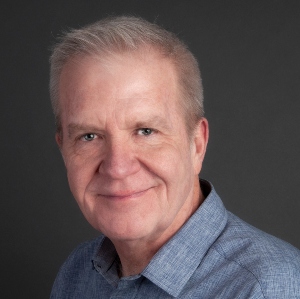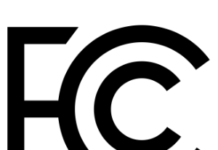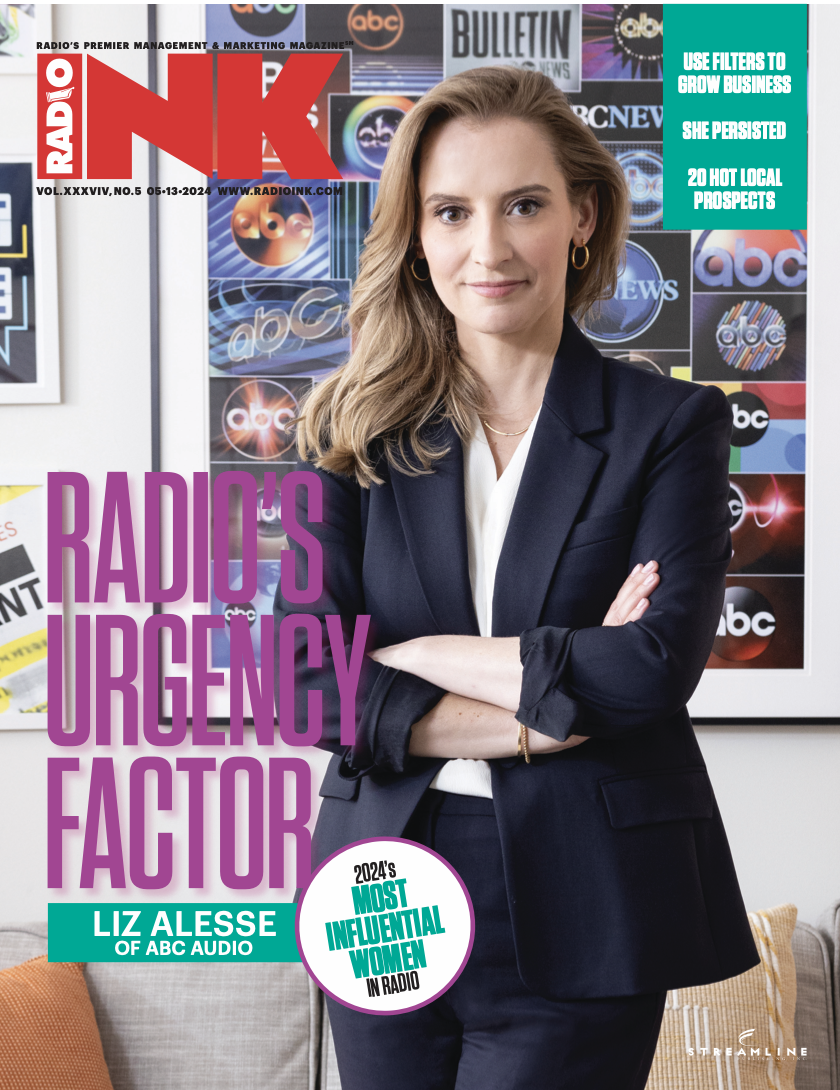
(By Buzz Knight) I think it’s important from time to time to step away from what we are familiar with and open our eyes with curiosity to new ways of thinking. There is a new wave of marketing when it comes to brand engagement and the radio business has an opportunity to seize it as a way to leverage its influencer strength.
I discovered a company called QYOU Media whose client portfolio includes Universal Pictures, 20th Century Fox, Sony Pictures, DreamWorks, and Warner Brothers to name a few and I was fortunate to have a conversation with their President Glenn Ginsburg. I hope you’ll be as inspired by his thinking as I was.
Q: How has QYOU become one of the foremost authorities on short-form brand engagement?
A: Short form has become the currency for how (young) audiences engage on social platforms and the ability to tell an impactful story to the right communities at the right time is essential in crafting effective campaigns. QYOU was built from both a media and storytelling perspective to take advantage of this new way content is consumed and spreads to support our clients’ marketing goals. QYOU accomplishes this via a proprietary methodology and our in-house content studio that delivers campaigns that are authentic, relevant, and scalable.
Storytelling is a component often overlooked from the media perspective and that’s what drives successful engagement. That is always our priority.
Q: Is radio optimizing the use of short-form content to grow its brands?
A: In truth, radio gave us some of the first “influencers.” Radio has been a comforting voice regularly visiting your home that included brand integrations long before anyone else did it. It makes sense that radio would effectively transition into short form. We see a lot of instances where radio shows are being distributed as podcasts as well and sometimes simulcast on a visual medium however there seems to be a prevailing belief that traditional radio is dying.
They should be positioned from a creative and format position to thrive in a short-form content business model which is where someone like QYOU could come in to help. Radio and its formats have a ton of opportunities.
Q: What are some recent campaigns you have been involved in that you are most proud of?
A: All of them! We work hard to customize each and every campaign for the greatest impact so that it’s hard not to get attached to each one, but some that come to mind…
When we worked on Scream VI this year, we had so much fun with a lot of fantastical storytelling around the franchise’s iconic villain, Ghostface. For this installment, Ghostface unleashed his terror on NYC and QYOU went deep in developing a campaign to convey the horrific fun audiences would have. Teaming up with NYC creators and filmmakers, we shot/commissioned posts of our creators being stalked and killed by Ghostface in the iconic city. Needless to say… None of our creators made it out alive.
The campaign generated 17.5M+ views and 1.9M+ engagements. In its opening weekend, Scream VI was #1 at the Box Office, setting a franchise record with a $67M debut at the global box office with 42% of the audience in the key 18-24 demographic.
With Mission Impossible: Dead Reckoning, QYOU’s mission (which we chose to accept!) was to launch viral content on TikTok to capture the attention of Gen Z audiences. By leveraging our expertise to infiltrate TikTok with trending Creators, we launched a video anchored by the iconic “Mission Impossible” theme song, “Burning Fuse,” that reached a record-breaking 136 million views.
To celebrate Activision’s tentpole game, Call of Duty, we launched the #CODSquadUp TikTok challenge, inviting the TikTok community to show the wildest ways they “Squad Up.” QYOU collaborated with 17 creators with an aggregate of 196M followers to kick off the challenge and promote it to their fans across different communities. In essence, we infiltrated the #ForYouPage for a week. It had a ripple effect beyond our creators’ content with 5,000 more users using #CODSquadUp. In total, all of these posts generated an impressive 8.4B views. It’s so rewarding when your campaign is so successful it inspires people to jump in on their own.
Q: When you think of the term convergence media how should the radio business consider this and develop strategies for fan engagement?
A: There’s so much opportunity with radio to repurpose content while it’s being recorded. Establish a strong online presence through websites, social media, and mobile apps and then you can stream your radio content online (or as a podcast) and make it accessible across various platforms and devices. Chances are, by the way, that your online audience is different from your traditional audience, so in doing this, you are also increasing your reach.
What’s more, get those listeners involved! Collaborate with influencers, musicians, and other media outlets to expand your reach and engage new audiences. Cross-promotions and partnerships can help you tap into different fan bases. Encourage listeners to create and share their own content related to your radio station. This could include fan-made playlists, remixes, or even short audio clips. Feature user-generated content on your platform to foster a sense of community. Create online forums or social media groups where listeners can discuss your content, share their thoughts, and connect with fellow fans.
The radio business should embrace convergence media by diversifying its presence across digital platforms, engaging fans through interactive and personalized content, and continuously adapting to evolving technologies and audience preferences. By staying agile and forward-thinking, radio stations can effectively engage and grow their fanbases in the modern media landscape.
Q: What is the best coaching strategy advice to give to managers of talent who might be apprehensive about leaping into the creative waters of short-form engagement?
A: Millennials and Gen Z continue to enter the workforce and increase their earning potential. These younger generations have been gradually gaining more buying power and are expected to play a more prominent role in the consumer market in the coming years. With these younger generations, short form has become the currency for how they consume content on social media so it’s nearly a “must-have” at this point.
Mainstream talent should incorporate short-form social into their strategy to forge stronger connections directly with their fan base which makes them more valuable for future projects. And it doesn’t have to be cumbersome. If the talent is producing long-form content, there are opportunities to take “best of” clips and create short-form stand-alone content for promotions of their existing content. Check out how a lot of stand-up comedians repurpose short clips from their sets or cable specials. It’s not unlike how QYOU oversaw the Mission Impossible TikTok channel where, in addition to posting original content, we used interview clips or segments from behind the scenes and interviews.
Q: With your vast experience with influencer campaigns to help clients monetize the value of these precious commodities from your vantage point, do you believe the radio business is seizing the opportunity to use its influencer talents? What are some of the pitfalls they need to be aware of?
A: To assess the current state of radio talents as influencers, it’s advisable to look at recent industry trends and specific examples of radio personalities who have successfully transitioned into influencer roles. Additionally, social media platforms, podcasting directories, and YouTube channels can provide insights into how radio personalities are utilizing these mediums for influencer purposes.
Many radio personalities and stations maintain social media profiles where they engage with their audience, share behind-the-scenes content, and promote events or sponsors. This allows them to build a more personal and direct connection with their fans. Some radio shows have transitioned to podcasting, where they can create content on niche topics and build a dedicated following. Podcasting allows a more flexible and creative approach to content creation than traditional radio.
One of the benefits here is that radio personalities and/or shows with a substantial following are sought after for brand partnerships and influencer marketing campaigns. They could promote products and services to their engaged audience, potentially increasing revenue streams for the radio business.
The Washington Post is a great example of an old format breaking out into new, best practices. It has adapted to posting real-time updates on its social media profiles, especially on platforms like Twitter/X and Facebook. It allows them to keep their followers informed about breaking news and current events as they unfold. Their visual Content performs incredibly well. They opted to choose one member of their team to maintain their TikTok channel, making him a TikTok celebrity people now look forward to seeing. It really humanized their brand.
Being online has also given WaPo an opportunity to share its content in multiple languages or provide translations, making its stories accessible to a broader audience.
Pitfalls? Well, there is always a learning curve and a time commitment when taking on anything new. Social media requires a lot of time to master its effectiveness but the good news is that the results can be well worth it (also a great reason to work with QYOU, if I may say so). Specifically, within radio, there may be a period when talent must get used to being on camera. (At the end of the day, though, if you are yourself; if you are authentic, you almost can’t go wrong!) It’s also such a rapidly evolving medium that sometimes you have to ensure you don’t fall behind on trends so find some folks you like following in your space to keep an eye on what they’re doing and find some good outlets to keep up with (like Lia Haberman or Brendan Gahan’s newsletters).
Buzz Knight can be reached by e-mail at [email protected]. Read Buzz’ Radio Ink archives here.






Radio made a mistake by calling its “DJ’s” ‘Influencers’…. They’re not at all.
The music is picked by a some guy who is just realizing what other stations are playing.
The DJ’s are trying to be comedians over 8 second intros.
The contests and “visit our website” is 80% of the content.
Repeating how “Awesome” a new song is.
Oh, and the feet up on the board with the hashtag #radiolife… so lazy.
Look at trending social media personalities. Then look at Radio DJ’s Social Accounts.
Who would you rather spend money with?